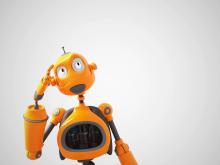Over the past few decades, with the rise of the Internet and now, the metaverse, navigating the seemingly endless deluge of options online feels almost like a full-time occupation.
From e-commerce to music and movie suggestions, recommender systems are responsible for powering our on- and off-line activities: from Amazon’s product recommendations, restaurant suggestions and Facebook’s newsfeed personalisation, to movies to watch — handpicked by Netflix’s Recommendation Engine.
In the 1940s, mathematician Jon von Neumann and economist Oskar Morgenstern developed game theory, a technique used to analyse complex situations. Much like the centuries-old chess game, game theory abides by the principles whereby your moves are directly affected by that of your opponent.
At the recent World Expo 2020 in Dubai, SMU Assistant Professor of Computer Science Arunesh Sinha shed light on the importance of game theory in analysing modern-day situations during his presentation, Real World Decision Making using Game Theory.
Understanding how real-time data can help with predicting passenger behaviour and reduce commuter wait time on the last mile journey
It might be an ambitious aspiration, but by 2030, Singapore hopes that 75 per cent of all peak-hour commutes will be conducted through public transport.
This vision of future urban mobility centres on fostering a ‘car lite’ society, where a smart, multi-modal public transportation infrastructure offers commuters an affordable and convenient alternative to private car usage.
In recent years, blockchain technology has been hailed as a breakthrough disruptor, poised to drive innovation in virtually every industry ranging from legacy organisations to game-changing start-ups in the new digital economy. This revolutionary technology stems from the ability of blockchain to act as a decentralised distributed ledger. It promises more secure real-time transactions and record-keeping, making it harder for important data to be manipulated or falsified.
There is a reason why engineers and designers provide machines with the semblance of friendliness, but it takes more than that to establish trust between AI and humans.
I was at Promenade MRT Station waiting to travel to work, when my attention was drawn to a little boy pointing at a cleaning robot moving in my direction. It was making comforting gurgling noises, its eyes were blinking gently and soft music accompanied its movements.
"Look at its smiley face!" said the boy and we all boarded the driverless train without a worry.
Artificial Intelligence (AI) is simultaneously an older, established technology and a newer, rapidly developing and emerging technology. How can it be both old and new? The ability to write software programmes that could do more than “compute” numbers — that could use AI methods for logical inference to prove logic theorems and solve algebra problems with symbols instead of numbers, goes back to the 1950s. The first chatbot was created in the mid-1960s using the AI methods available at that time.
At a panel discussion titled ‘The Brave New Quantum Economy’ at the 2022 World Economic Forum (WEF) Annual meeting in Davos, panellist and physicist Jeremy O’Brien shared his opinion that quantum computing is “destined to be the most profoundly world changing technology humans have yet uncovered”, even more significant than the launch of artificial intelligence (AI).









